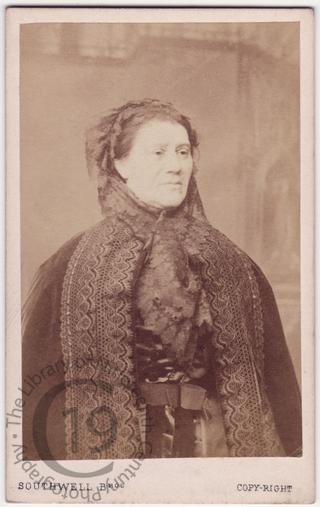
Madame Rachel
The trial of Madame Rachel in 1868 was the sensation of its day. Born, probably, in Covent Garden in or about 1815, Madame Rachel’s real name was Sarah Rachel Leverson. In the early 1860s she set herself up in business on the corner of New Bond Street and Maddox Street in a fashionable quarter of London, where she sold various ointments, powders and cosmetics that she claimed would make any woman ‘beautiful for ever.’ All her concoctions had extravagant and exotic names, for example ‘Magnetic Rock Dew Water of the Sahara’ for removing wrinkles, ‘Honey of Mount Hymettus Soap’ and ‘Circassian Golden Hair Wash.’ One of her customers was a Mrs Borradaile, the widow of a colonel, who on her first visit in 1865 spent £10 but ended up parting with in excess of £5000 over the following months.
During the course of her treatments Madame Rachel (or ‘Granny’ as she invited her clients to call her) told Mrs Borradaile that another of her clients, Lord Ranelagh, had spied her from afar and fallen in love with her, but because of the difference in their social status, he would have to communicate with Mrs Borradaile by letter. A stream of love letters ensued, in which Lord Ranelagh urged the object of his affections to continue with her treatments and to put herself entirely in Granny’s hands. When the dupe eventually grew suspicious and questioned why the letters were sometimes in different hand-writing, she was told that Lord Ranelagh had hurt his hand and had therefore dictated some letters. When Mrs Borradaile questioned why he had on different occasions signed his letters with different forenames, she was told that he was protecting his identity should the letters fall into the wrong hands. A proposal of marriage was eventually made and accepted – still all via letter - and Mrs Borradaile handed over further funds to buy lace and hire carriages for the wedding, even making over £1600 in bonds to the groom.
Finally, this tissue of lies proved too implausible for even the gullible Mrs Borradaile and realizing that she had been swindled she went to Marlborough Street police station, where she filed a complaint. The resulting trials – the first jury was unable to reach a decision - provided newspaper readers with much amusement. Lord Ranelagh appeared as a witness, who of course turned out never to have set eyes on Mrs Borradaile in his life. When asked what business he had had going to Madame Rachel’s premises in the first place, his evasive answer was ‘You don’t suppose I went there to be enamelled!’ Despite his denial, the rumour circulated that he went to have his moustache dyed.
The outcome of the trial was that Madame Rachel got five years penal servitude in Newgate. On her release, she returned to her old ways and was soon back in court, where she was sentenced to another five years. She died in Woking Prison in 1880, aged 60.
Photographed by the Southwell Brothers of Baker Street, London.
Entered at Stationers' Hall by the Southwell Brothers on 10 October 1868. According to the registration form, this is a 'Photograph of Madame Rachel from wax model, bonnet on, nearly full face, ¾ length.'
Code: 123924




